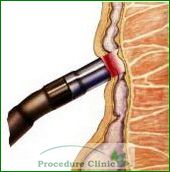Introduction
Hemorrhoids, a common ailment affecting countless individuals, can bring discomfort and disruption to daily life. Among the various treatments available, infrared coagulation (IRC) has emerged as a non-invasive and effective option for addressing hemorrhoidal symptoms. In this blog, we delve into the world of IRC, understanding its mechanism, benefits, procedure, and its role in providing gentle relief to those dealing with hemorrhoids.
Understanding Hemorrhoids
 Hemorrhoids are swollen blood vessels in the rectum or anus that can cause pain, itching, bleeding, and discomfort during bowel movements. They can be internal (inside the rectum) or external (outside the anus). Lifestyle factors, constipation, pregnancy, and genetics are common contributors to their development.
Hemorrhoids are swollen blood vessels in the rectum or anus that can cause pain, itching, bleeding, and discomfort during bowel movements. They can be internal (inside the rectum) or external (outside the anus). Lifestyle factors, constipation, pregnancy, and genetics are common contributors to their development.
The Mechanism of Infrared Coagulation
Infrared coagulation is a minimally invasive procedure designed to treat internal hemorrhoids. It operates on the principle of thermal energy application. During the procedure, a specialized device releases a burst of infrared light to the base of the hemorrhoid. This light is absorbed by the blood vessels, causing them to coagulate (clot) and shrink. As a result, the blood supply to the hemorrhoid is reduced, alleviating its symptoms.
Benefits of Infrared Coagulation
The IRC Procedure
The IRC procedure is typically as follows:
Incorporating IRC in Hemorrhoid Management
Infrared coagulation has found a significant place in the realm of hemorrhoid management. It offers a middle ground between conservative treatments (such as dietary changes and topical medications) and surgical interventions (like hemorrhoidectomy). For individuals seeking a less invasive solution with quick recovery, IRC can be a viable choice.
Conclusion
Hemorrhoids need not be a source of constant discomfort and disruption in one’s life. Infrared coagulation offers a ray of hope, providing a gentle and effective way to address the symptoms of internal hemorrhoids. As medical techniques continue to evolve, IRC stands as a testament to the ability of modern medicine to provide relief without the need for invasive surgeries. If you’re dealing with hemorrhoids, consider discussing the possibility of infrared coagulation with a healthcare professional to determine if it’s the right solution for you.
Note: One Stop Medical Center provides the service of hemorrhoid care. We have two office locations in Edina, Minnesota, and Casselberry, Florida. If you are interested in hemorrhoid care, Please fill out the online registration first, we will call you in 2 business days, or please call us at 1-888-992-0019 if any questions.

 IRC offers major advantages to patients over previous hemorrhoid treatment methods:
IRC offers major advantages to patients over previous hemorrhoid treatment methods:



